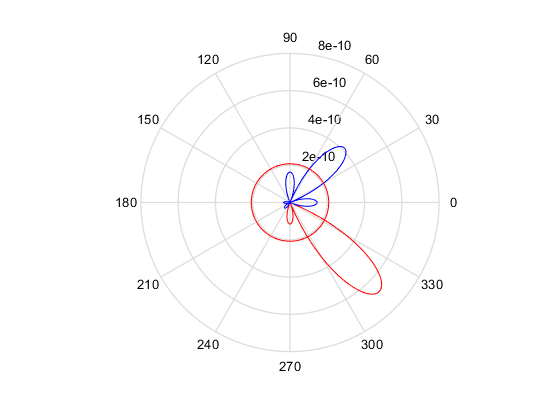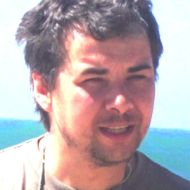EEG/MEG inverse problem
Electroencephalography (EEG) and magnetoencephalography (MEG) are the most frequently used neuroimaging techniques outstanding from the others due to their extremely high temporal resolution (about 1ms). These techniques allow to study subtle and complex informational exchange processes in the human brain. However the reconstruction of the activity of neural cortical populations on the basis of EEG/MEG signals is a complex problem. This problem is called the EEG/MEG inverse problem and it does not have a unique solution. Mathematically speking, it is an ill-posed problem, so in order to solve it different regularization methods are used. Regularization methods in their essence is the analytical technique, which allows to add extra information about the desired solution which is in our case the distribution of cortical activity. An example of such distribution is demonstrated on the picture below. The more realistic is the initial assumption about the solution characteristics, the more accurate the obtained solution will be and the higher will be the probability that it indeed reflects the actual cortical activation map.
The neuroimaging group in our Center develops new approaches to the EEG and MEG inverse problem solution, based on the physiologically plausible assumptions, which have not been considered in the existing methods.
Inverse problem solution with cortical travelling waves prior
The phenomena of neural propagation in the form of travelling waves was first described about century ago, however, the interest in this topic rapidly increased in the past several decades due to the significant progress in experimental techniques which results in the growing body of research confirming the travelling waves theory.
For example, it was shown that alpha-oscillations propagates as a travelling wave while modulating bursts of gamma-oscillations both in space and time (Bahramisharif et. al 2013). Moreover, it was demonstrated that in particular brain areas travelling waves form the consistent propagation direction and this consistency significantly correlates with the performance during the cognitive task (Zhang et. al 2017).
This physiological assumption about the existence of the spatio-temporal structure of neural activity propagation forms the main idea of the new inverse problem solution method, developed in our Center.
The solution obtained is a set of moving cortical waves, each of which is characterized by the optimal and physiological consistent velocity of motion, the main direction and scale of propagation. An important spoilage is also a high spatial solution of the final solution.
.gif.(322x345x123).gif)
The developed method is supposed to be used also for applied purposes, namely for functional diagnostics of the dynamics of inter-convulsive activity of patients with epilepsy. So-called inter-convulsive spikes (interictal spikes) are short-term events that are a diagnostic marker of epilepsy. The area of the cerebral cortex that gives rise to such paroxysmal activity often coincides with the zone of initiation of seizure (epileptogenic zone). The development of non-invasive or minimally invasive methods for analyzing the spatial and temporal spread of intercondition adhesions in patients with pharmacoresistant form of epilepsy will potentially increase the effectiveness of neurosurgical intervention and reduce postoperative risks.
Have you spotted a typo?
Highlight it, click Ctrl+Enter and send us a message. Thank you for your help!
To be used only for spelling or punctuation mistakes.


.png.(574x323x123).png)
.gif.(310x446x123).gif)